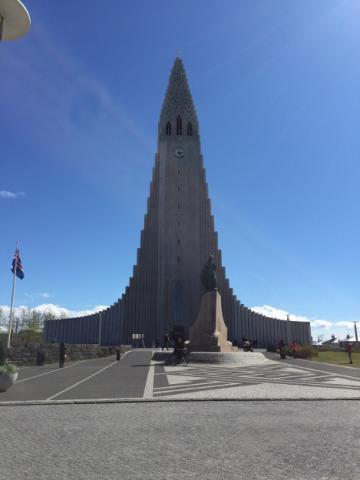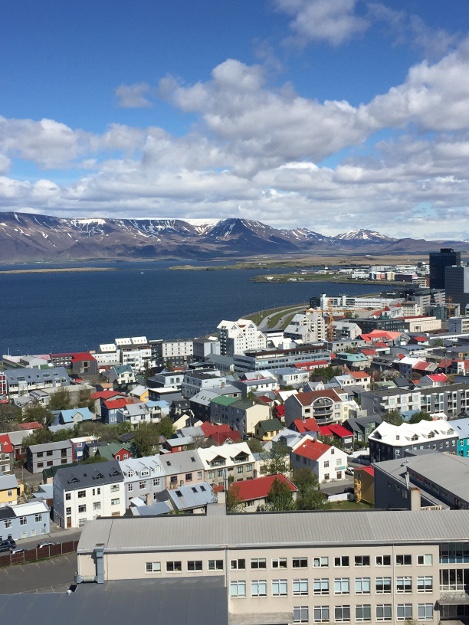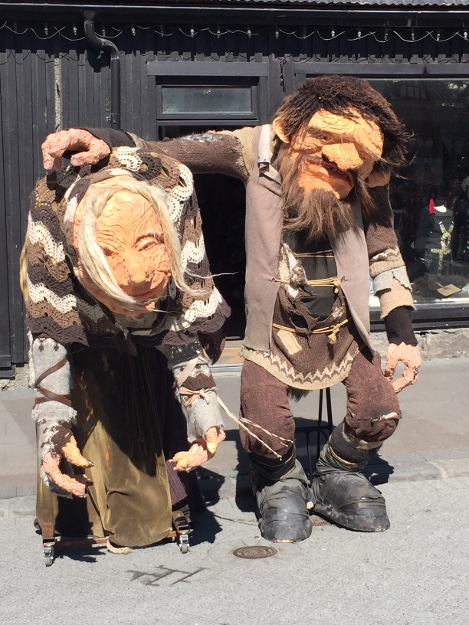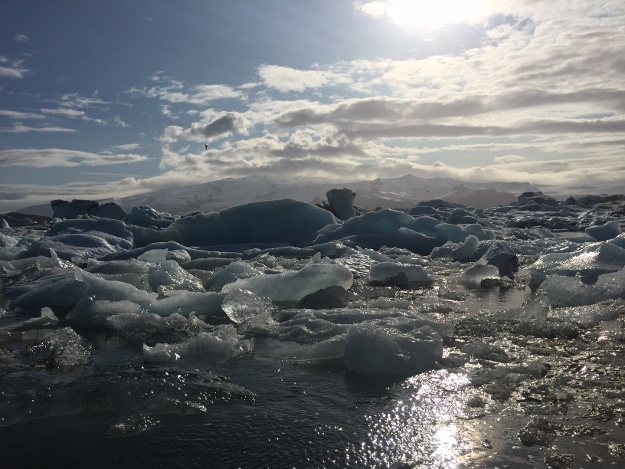Iceland: Land of Elves, Eruptions and Economic Recovery

On April 14, 2010, an event took place on the northern Atlantic island nation of Iceland that would alter the course of the country for the foreseeable future. The volcano Eyjafjallajökull—its pronunciation alone creating its own separate news story—erupted, sending clouds of ash tens of thousands of feet into the sky. The prevailing winds over the next several days sent the ash into European airspace, forcing the cancellation of hundreds of transatlantic flights, and causing ripple effects for air travel all over the world.
Suddenly, a country that many people had never heard of and a volcano with a name most news anchors found themselves stuttering over found themselves to be the top story on many news broadcasts around the globe. While the eruption itself only lasted a few days and was relatively minor in terms of the destruction it caused and the lives lost (none), the memory of the event lingers on several years later for those affected by it and those who followed it so closely. As a result, many people became aware of a country with a diverse natural landscape that sits halfway between North America and Europe that had yet to be “discovered” and overrun by tourism. It is not often that natural disasters help to contribute to the global profile of a country as a desirable place to visit, but in the case of Iceland and its unpronounceable volcano, that is exactly what happened.
To find the true initial catalyst for the increase in tourism in Iceland, one has to travel a little further back to 2008, where the default of all three of its privately-owned commercial banks caused Iceland to enter a severe economic depression for the next several years, from which it is still recovering. According to The Economist, relative to the size of its economy, Iceland’s systemic banking collapse was the largest experienced by any country in economic history. Like any economic crisis, the price of goods plummeted, causing the country’s initial uptick in tourism, as it became much more affordable than it had been previously.

Additionally, the events of 2008 and their presence in the news cycle also contributed to putting Iceland on the map, so to speak. Several years later, Iceland is considered to be in economic recovery, partly due to the increase in the amount of tourist spending that has occurred. The future may have looked bleak and the sky may have been darkened by ash, but Iceland has found a way to capitalize on its hard times and bring itself to an economic position that is better than it was before the collapse. In fact, the pendulum has begun to swing so far in the other direction that Iceland now finds itself trying to strike a balance between preserving its natural beauty, and keeping the island from becoming overrun by tourists, as well as managing its economic growth to ensure it never again has to endure another financial crisis of such magnitude.
One of the factors that previously worked against Iceland but is now something that attracts visitors is its remote geographical location. Iceland sits isolated in the North Atlantic Ocean, with the nearest land to its shores being the sparsely populated island of Greenland. Despite this, Iceland has figured out a way to capitalize on its isolation in the era of affordable air travel. Prior to this and throughout its history, accessing the island via rough ocean waters and its rugged terrain made Iceland appear inhospitable and undesirable. Additionally, its northern location made its climate extremely cold and wet, making survival without modern conveniences rather difficult. Today, however, visitors wishing to travel to Iceland from either side of the Atlantic need only to board a short flight, which can be combined with a visit overseas at no additional cost. In particular, nature lovers have become a huge draw for Iceland—similar to its closest neighbor, Iceland has the smallest population density of any country in Europe, resulting in vast stretches of landscape uninhabited and almost virtually undiscovered.

Located in the southwest corner of the island is Iceland’s capital, Reykjavik. Home to more than two-thirds of the country’s total population (just shy of 330,000, with greater Reykjavik accounting for approximately 230,000) it is Iceland’s only major city and the focal point for business, culture, and nightlife for visitors. Despite the location of the international airport being in Keflavik—a town 50 kilometers south—Reykjavik is the gateway for tourists entering and leaving the country. An extremely walkable city, Reykjavik earns its name—translated from Icelandic it means “smoky bay”—from the seemingly perpetual grey mist that hovers over it. Despite the excessive gloom—or maybe because of it—Icelanders have become known for their nightlife, which on a typical night does not begin until the wee hours and lasts well into the morning. This is especially true in the summer months when, due to its northern latitude, Iceland experiences nearly 24 hours a day of continuous daylight.
Reykjavik is also the place for visitors seeking to learn about the history of Iceland. Museums—like the National Museum of Iceland—do an excellent job of navigating Iceland’s Viking past, beginning with the first known appearance of human beings on the island. Additionally, the exhibit known as Reykjavík 871±2, created by the Reykjavik City Museum, is an archeological excavation of one of the first houses ever constructed on the island, remnants of the first human habitation on Iceland. The name of the exhibit is a reflection of approximate year of this event, 871, plus or minus two years. One of the most popular attractions in Reykjavik, however, is located halfway between the city and Keflavik and receives visitors from all over the world—the natural hot spring known as the Blue Lagoon. Tourists here have the option of combining their visit with traditional elements of the luxury spa experience, including massages and mud baths, either before or after they immerse themselves in the naturally hot waters of the lagoon, heated from beneath the earth as a result of Iceland’s volcanic origins.
Visitors to Iceland that do not find their way out of Reykjavik have barely begun to scratch the surface of this incredibly diverse land mass. A geologist’s dream come true, it is hard to find another location on Earth that can boast such a wide array of landscapes over a small geographical area as Iceland. Ranging from vast, barren lava fields to rugged, snowy mountains and volcanoes and frozen glaciers, nature-lovers can travel around the country for weeks and never become bored. One popular attraction within a day’s drive of Reykjavik is known as the Golden Circle, consisting of Gulfloss—or the “Golden Waterfall”—the geysers Geysir and Strokkur, and Þingvellir, a valley where one can actually walk the rift where the North American and European tectonic plates meet. Additionally, a drive throughout Iceland will find many other natural hot springs aside from the Blue Lagoon, guaranteed to be less crowded and more relaxing.
There is evidence of Iceland’s economic recovery, taking place at breakneck speed, around every corner, especially in Reykjavik. New hotels are being constructed all over the city, mostly to meet the demand that its economic crisis triggered, with a little help from a volcanic eruption. Like any place, Iceland has its peak tourist seasons, but still manages to stimulate year-round interest despite its cold and dark winters, as many travel there to catch a glimpse of the famous Northern Lights.
In the summer, moderate temperatures and several weeks of consecutive daylight make Iceland an attractive alternative destination for those who love the outdoors but are tired of tanning on the beach. The challenge that lies ahead for Iceland, however, is to ensure all those new hotel rooms are occupied while still maintaining the quiet isolation that is the country’s appeal, all the while keeping the economy stable—nothing would be worse than creating a modern infrastructure dependent on tourism for tourists that never come. For a population that is said to believe in elves, living in a country that gives meaning to the word breathtaking, it’s hard not to root for their continued success, and doubtless that they will achieve it.


Author Bio:
Michael Verdirame is a contributing writer at Highbrow Magazine.
For Highbrow Magazine
Photos: Michael Verdirame




























































































































































































































































































































